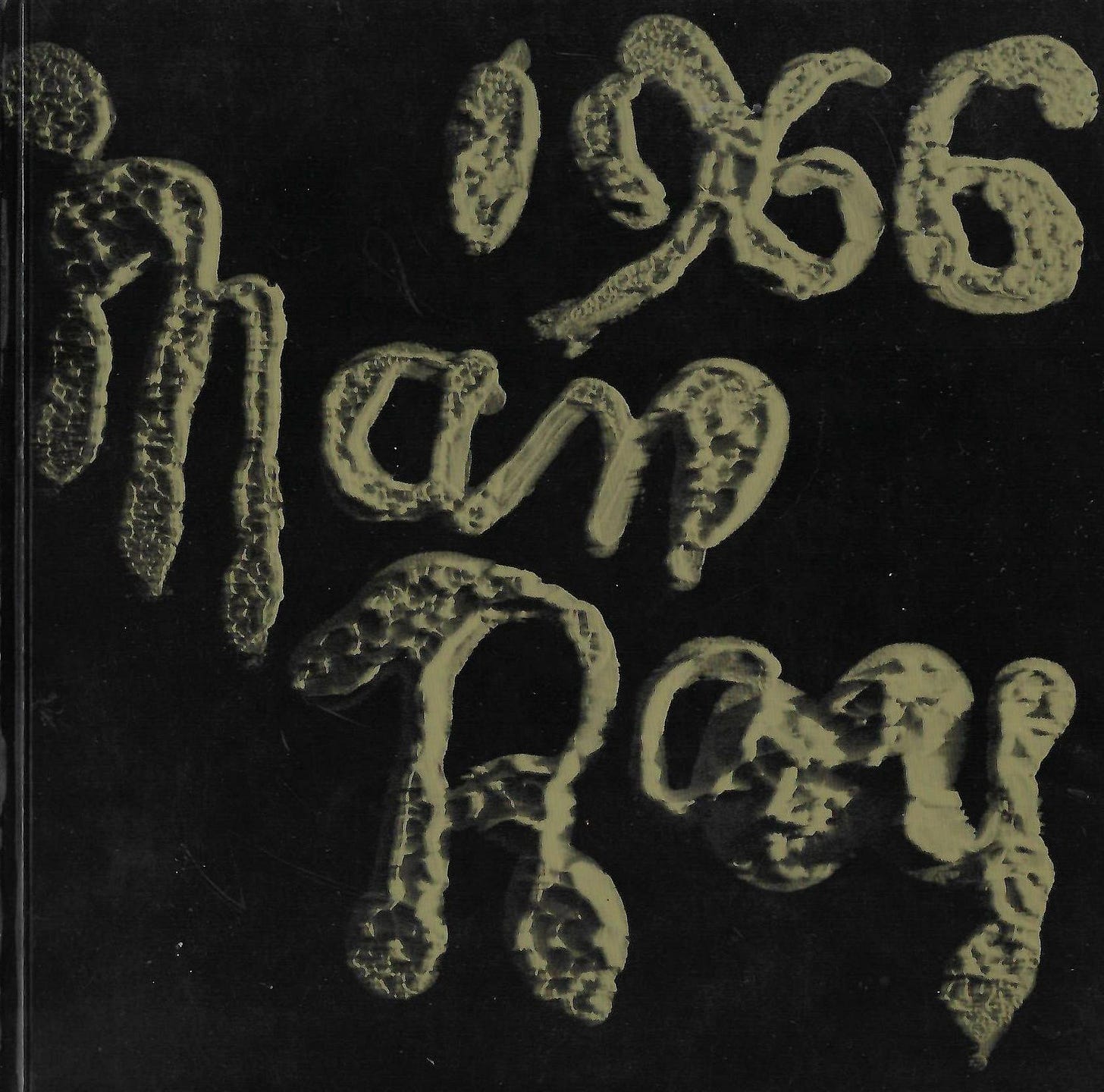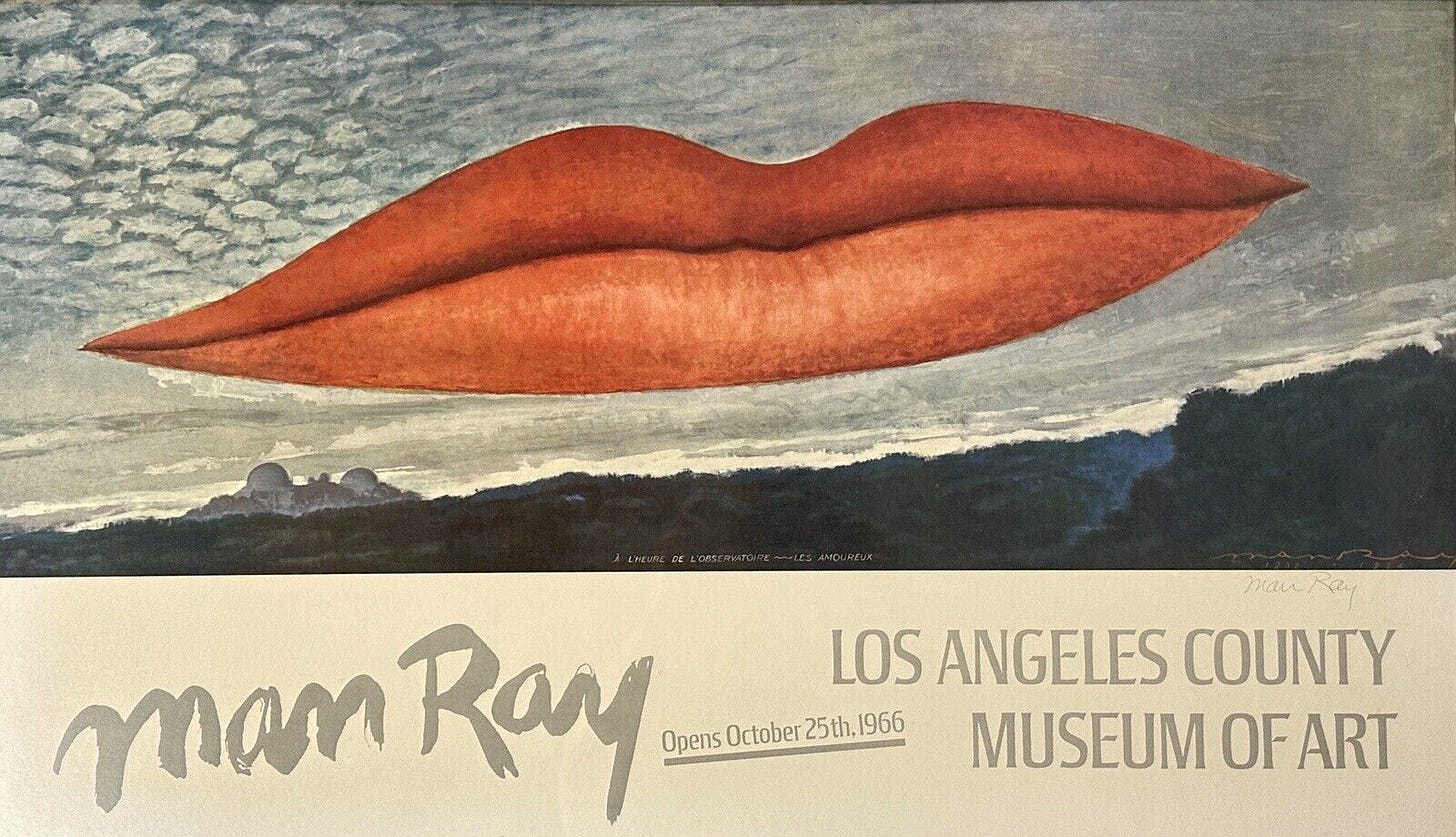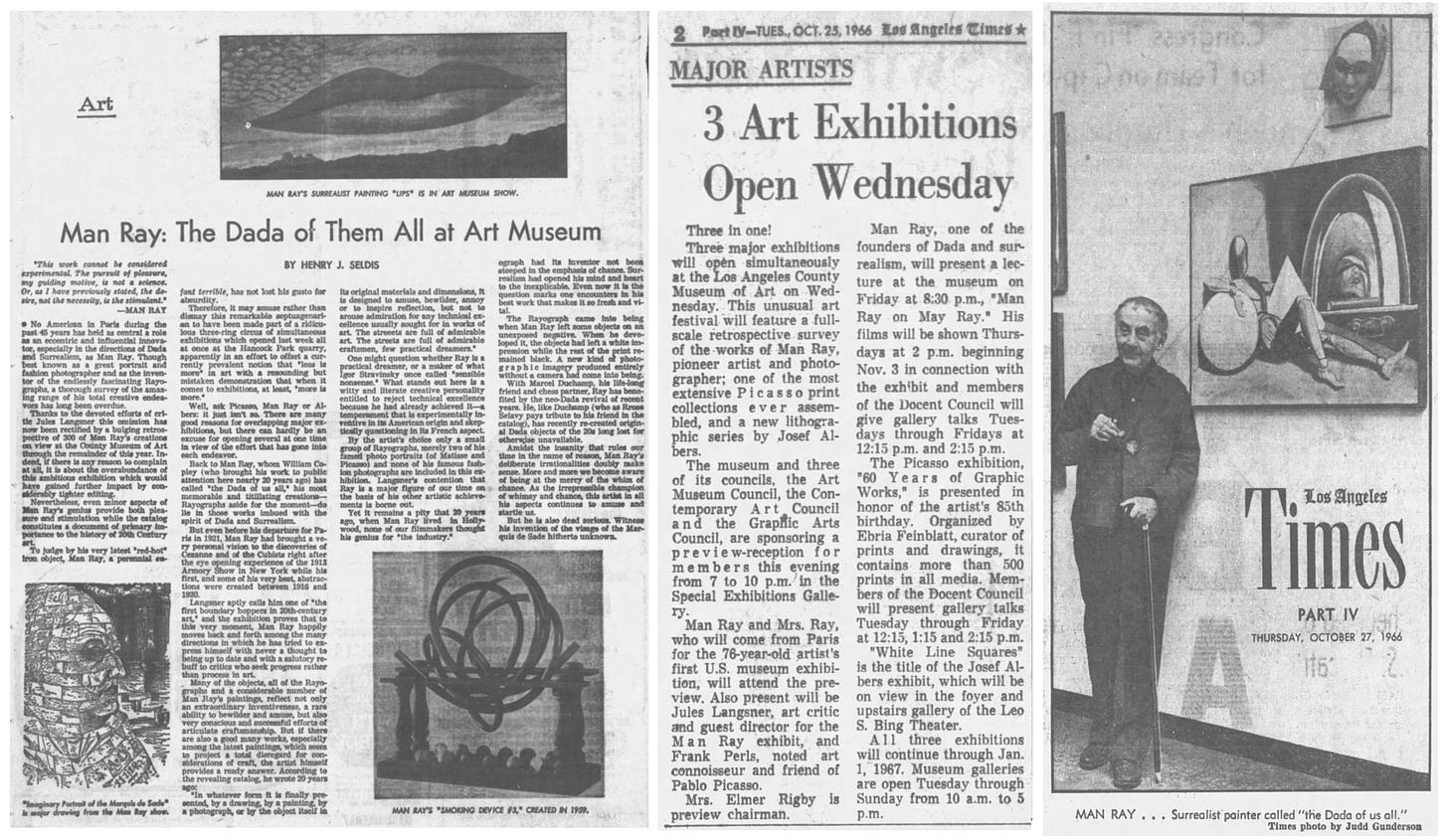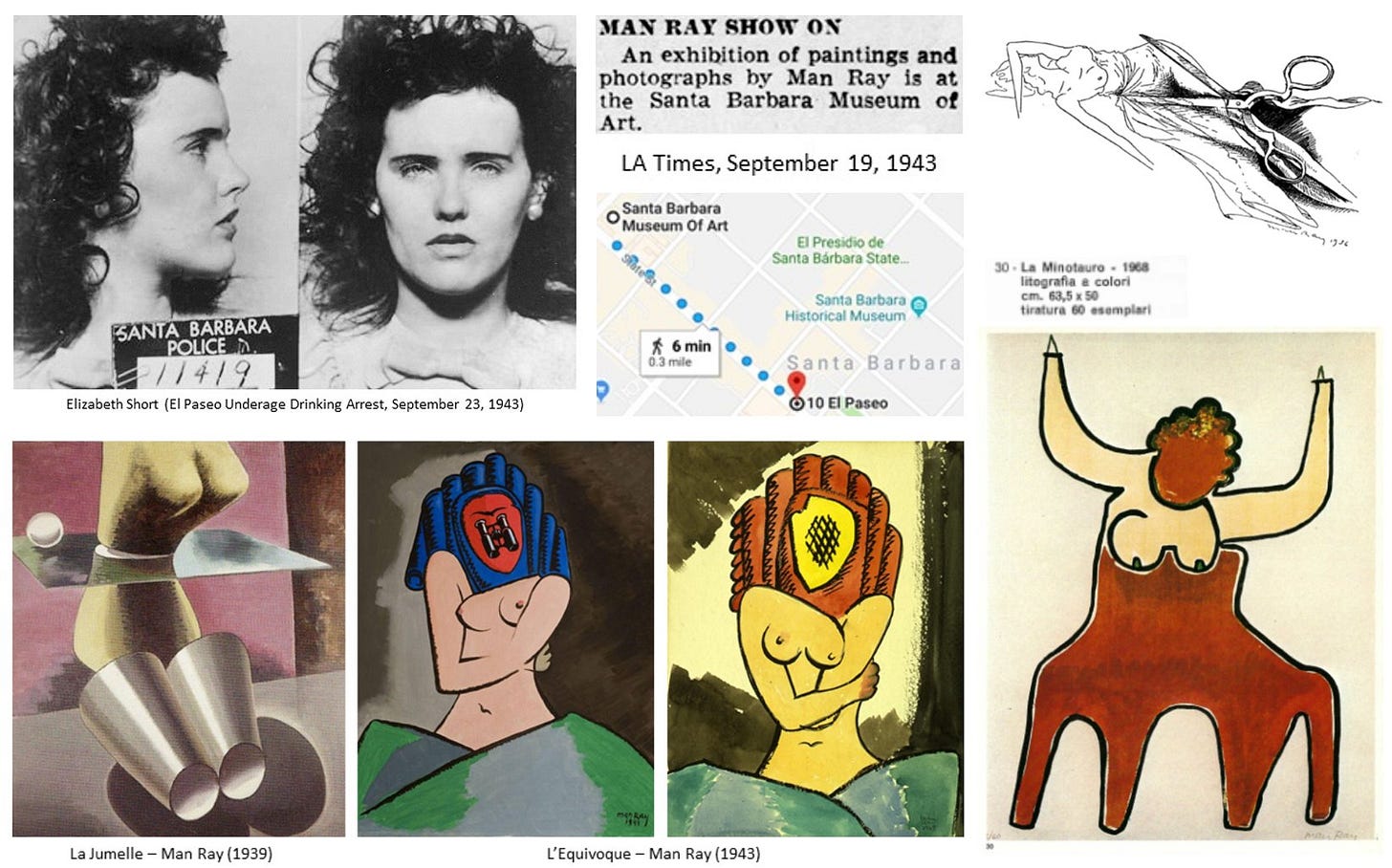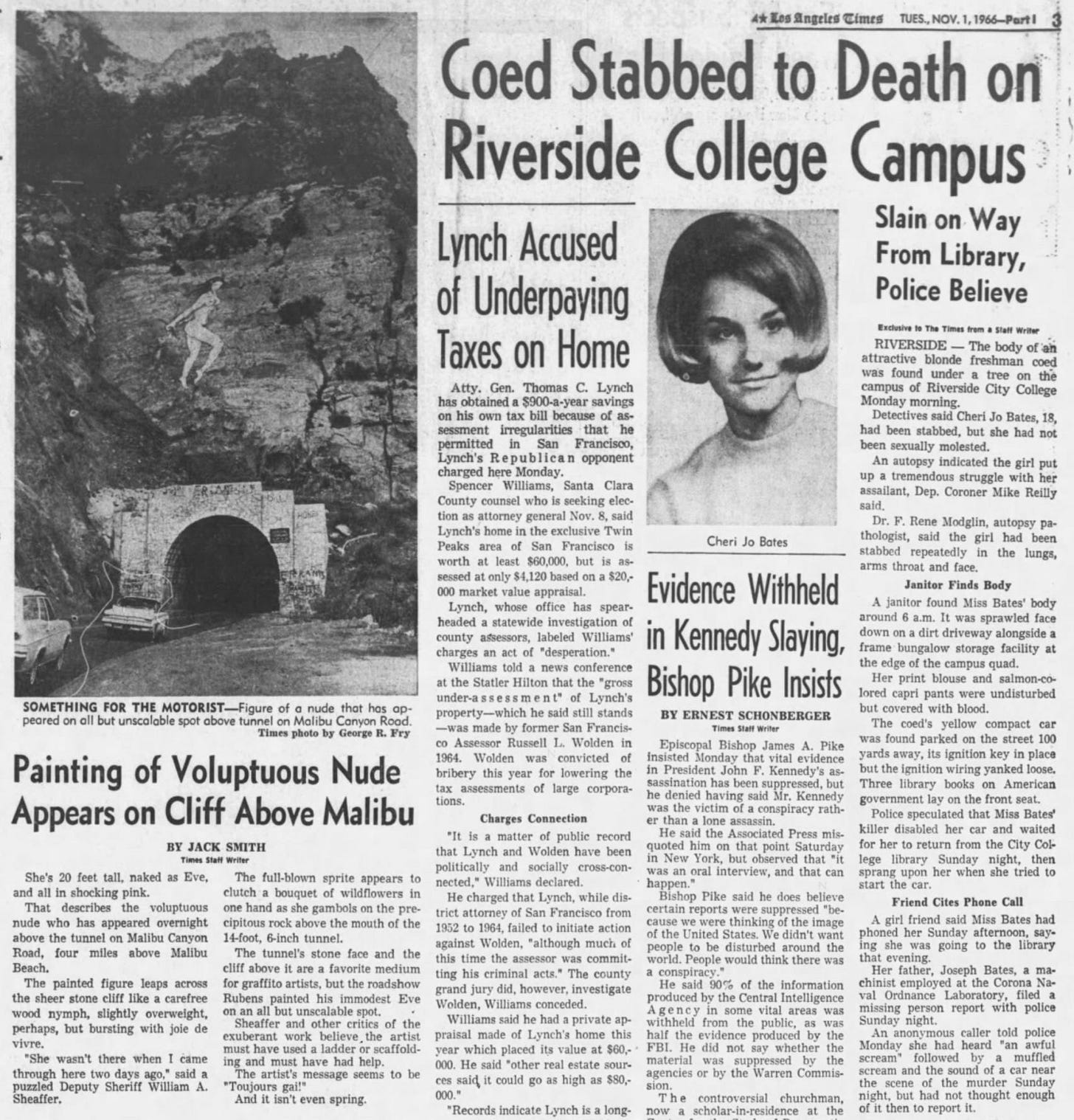“I am still waiting for one who will surpass Sade and Lautréamont.” — Man Ray1
I believe George Hodel was the Zodiac and that he was responsible for the Riverside Confession letter and Desktop Poem, and perhaps the questionably-debunked “Bates Had To Die” notes. I am still on the fence about whether he murdered Cheri Jo Bates, but find myself leaning slightly towards the theory that this was a case of the Zodiac exploiting a news story for his own ends, to feed his ego and create his own “art.”
There are established instances where the Zodiac made false confessions, albeit in a fairly offhand, hit-and-run fashion. His casual affirmation of Kathleen Johns’ kidnap story is likely a case in point. Richard Grinell has also identified multiple occasions where it looks as if Zodiac deceptively hinted at authorship of other people’s crimes. If Zodiac’s claim to have carried out the Bates murder is a fakeout, it would represent a more elaborate type of hoax. The closest parallel I see within the Zodiac case is the Pines Card, which hinted at responsibility for the disappearance of Donna Lass — at least, if I am right he had nothing to do with that crime. I believe the Hearst Family letters (another great Grinell find) could be more of the same, although the put-on there is more of a straight leg-pull and is played for laughs (like Zodiac’s school bus shooting and bus bomb threats). Going back to the 1920s, the “Avengers” letters in the Aimee Semple McPherson kidnap hoax offers an interesting precedent, and there is plenty of reason to suspect George Hodel’s involvement there, too.
I have a pretty strong hunch about what set George off in 1966. Days before the Bates murder the LA County Museum of Art (LACMA) launched a major retrospective on the work of surrealist artist Man Ray (1890-1976), George Hodel’s old Sadean pal from his Hollywood days. Man Ray left Los Angeles for Paris in 1951, the same year George Hodel slipped the country to evade the Black Dahlia murder probe. Man Ray returned to the city to attend the LACMA exhibit preview and deliver remarks. I believe this was the first time he had been back to Los Angeles since his relocation to Paris.
The Man Ray exhibit ran to the end of 1966, thus spanning the Bates murder and the mailing of the Confession letter. The linkage between George Hodel’s friendship with Man Ray and his most notorious and best-established crime, the Black Dahlia murder, has been explored in Steve Hodel’s books, starting with Black Dahlia Avenger, and by Mark Nelson and Sarah Hudson Bayliss in Exquisite Corpse: Surrealism and the Black Dahlia Murder (Bulfinch Press, 2006). Having followed the ever-growing circumstantial evidence on this issue for eight years now, I fully endorse the theory that the George Hodel-Man Ray relationship and the Black Dahlia murder are intimately connected.
I hereby note that the Bates Confession letter contains a judiciously ambigous and yet fairly obvious evocation of the Black Dahlia murder:
BUT I SHALL CUT OFF HER FEMALE PARTS AND DISPLAY THEM FOR THE WHOLE CITY TO SEE.
Having by now some idea of the way George Hodel’s mind worked, I cannot see him being anything but highly “triggered” by the coverage of the LACMA retrospective, which must have brought back a flood of memories of his most iconic crime — his pièce de résistance. Perhaps he arranged to be in Los Angeles for the opening and Man Ray’s visit — that was my first thought looking at the coincidence in dates between the start of the show (October 25) and the Bates murder (October 30). If so, it would be compatible with his having killed Bates. While that remains a tenable idea, I think a plausible alternative scenario is that Hodel read about the show while overseas and arranged to be in LA during the two-month run. That stimulated him to piggyback on the Bates murder with his own “art project” while visiting old haunts, pour épater la bourgeoisie in the manner of the Decadent poets both he and Man Ray adored. On this scenario, the Riverside story could have been something he filed away as he brewed the project — rather as I suppose he read the SF Chronicle’s “Tahoe Mystery” story in September 1970 and churned out the Pines Card months later.
In the course of researching for a blog post a couple of weeks ago, I clocked a second potential “trigger” relating to the Black Dahlia case. This came after the Bates murder, and to my mind gives us one more reason to suspect that the Zodiac link there could involve art more than reality. Checking out the Los Angeles Times’ first report on the crime in Riverside, I noticed it ran next to a lighthearted story about a gigantic female nude which an unknown artist painted overnight above a tunnel on Malibu Canyon Road, startling passers-by the next morning. I doubt George missed that association.
Man Ray: Writings on Art. Edited by Jennifer Mundy. Tate Publishing, 2016.




